If you’re using a desktop PC, you need a keyboard of some kind. And if you’re using a laptop or a tablet, you might want one just as a matter of comfort. If that’s the case, you should definitely check out PCWorld’s roundups of the best wireless keyboards, gaming keyboards, and mechanical keyboards.
But how do we determine which are the best? If you want to know the nuts and bolts of what goes into our exhaustive keyboard reviews, then read on.
How we get keyboards to review
Generally, we get keyboard review units directly from the manufacturers, which send them to the reviewer in their retail packaging. That allows us to experience the product in the same way that a potential buyer does. So from the moment we open the box, we’re evaluating the keyboard as if we were a regular consumer…albeit one with a decade or more of experience in professional evaluation.
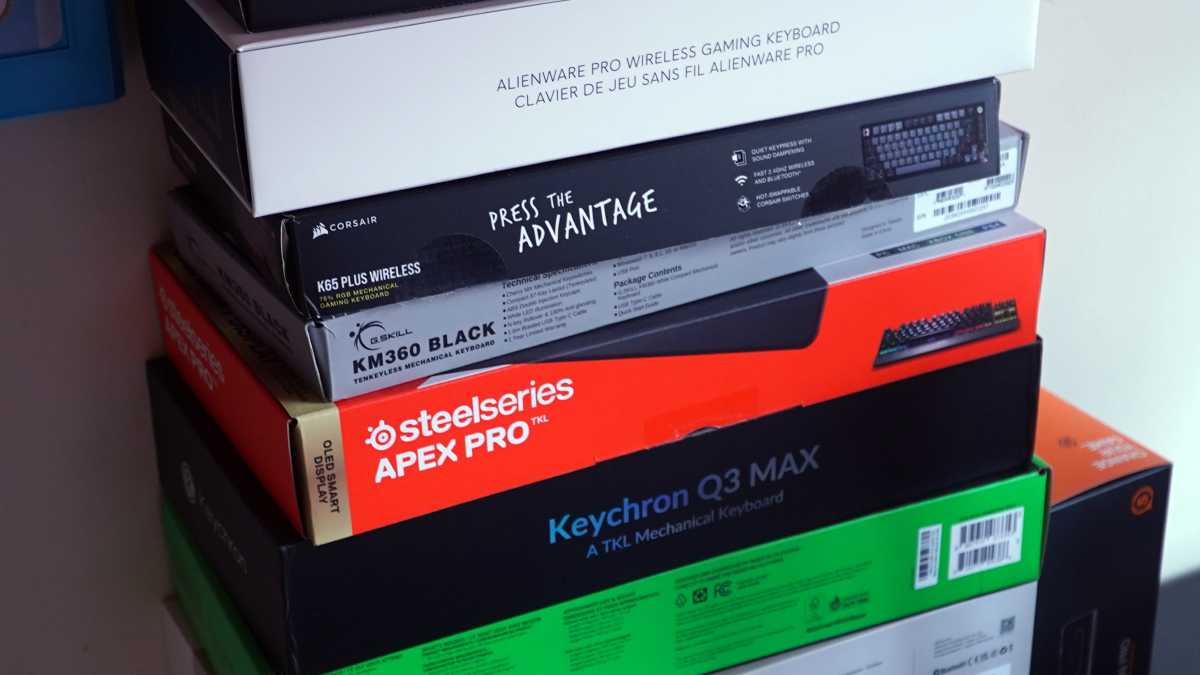
Michael Crider/Foundry
Michael Crider/Foundry
Michael Crider/Foundry
Of course, we occasionally buy keyboards just for ourselves. After all, we’re geeks too. But if we choose to review the keyboard, we write with the same level of professional detachment. So you can be sure that we’re coming at each review (and the resultant roundups) from a place of neutrality.
What we test in keyboards
Once the retail packaging is cracked open, we examine the presentation of both the keyboard itself and any additional parts included therein. A wrist rest is a big plus for any keyboard (and a tangible additional value that gets considered in the review), but they’ll typically come with a cable of some sort, which gets bonus points for being detachable even if the keyboard is wireless. And naturally, wireless keyboards get a dongle, unless they’re relying solely on Bluetooth.
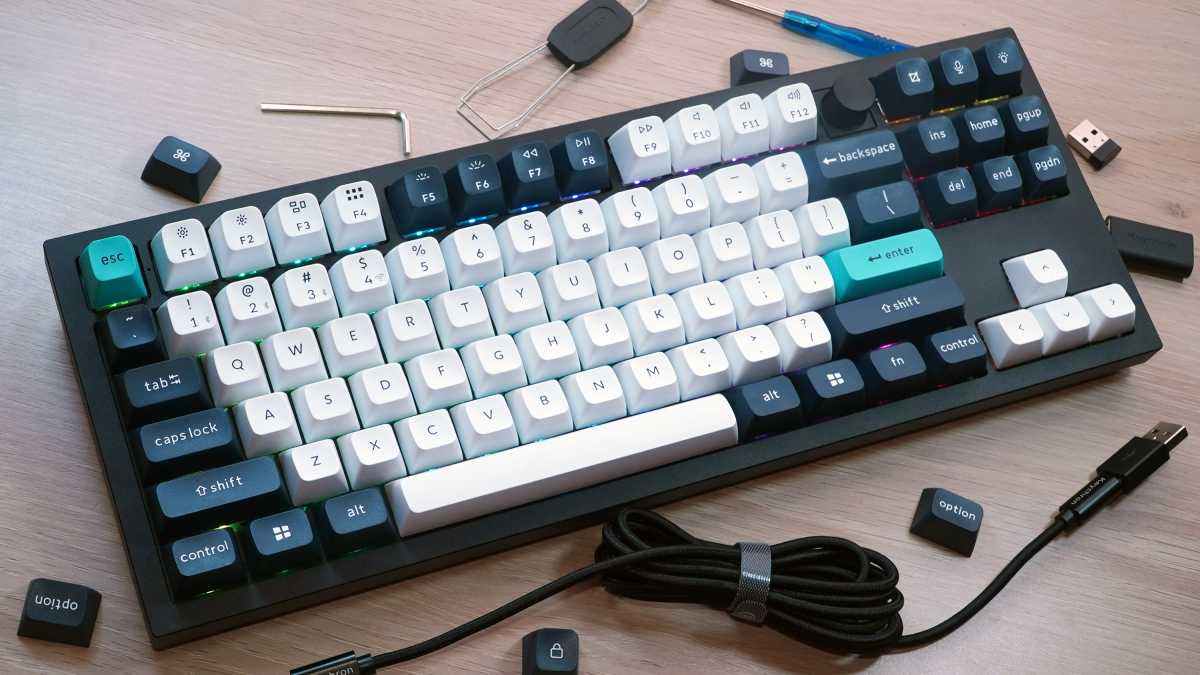
Michael Crider/Foundry
Michael Crider/Foundry
Michael Crider/Foundry
Mechanical keyboards tend to include a bit more in the package, especially if they’re leaning into a “custom” angle. These include a keycap tool (which is basically just two wire loops for pulling caps up vertically without damaging them), often combined with a switch puller if they have hot-swap switch sockets. Some mechanical boards will include alternate keycaps for different styles, or even spare switches in case some break.
When it comes to evaluating the keyboard itself, well, the thing to do is just use it. We typically use a keyboard for one to two weeks as our primary board with a desktop or laptop. And as professional writers, that means typing tens of thousands of words in a variety of formats. We’ll evaluate how it feels to type, if it has any particularly bad points, and how the keyboard layout compares to similar designs.
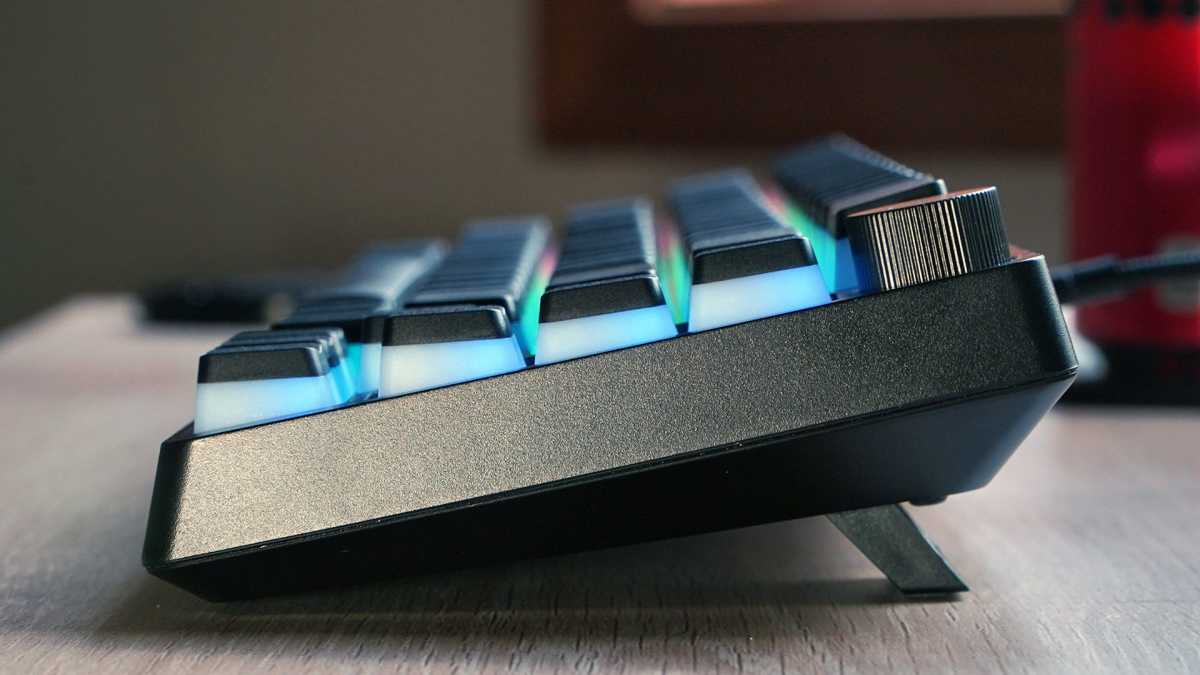
Michael Crider/Foundry
Michael Crider/Foundry
Michael Crider/Foundry
Smaller, more compact keyboards can be more difficult to adapt to, with more functions moved into a secondary layer and some keys (like the right Shift key) squashed to make room. Some of these choices can affect how comfortable it is to use them in both the short and the long term.
We’ll also play some PC games on all the keyboards that we test, with much more time devoted to it if the model is a specific “gaming” keyboard. How the keyboard performs for typing and/or gaming will be the primary factor in determining its review score, along with its price in comparison to similar designs.

Michael Crider/Foundry
Michael Crider/Foundry
Michael Crider/Foundry
For wireless keyboards, we’ll try out the wireless function in a variety of settings: directly connected to a desktop, to a laptop from several feet away, from across a room (about 10 to 15 feet) as a maximum scenario. This isn’t a particularly likely way of using it, but it might be relevant if you’re using the keyboard for a presentation PC or one hooked up to a living room television. We’ll try out all wireless modes, and swapping between devices if the keyboard advertises that as a feature.
Disassembling (some) keyboards
For mechanical keyboards that bill themselves as “customizable” or similar, we’ll test out removing the keycaps and switches, and see how far you can go in disassembling it. Whether or not we take it apart completely depends on how it’s advertised.
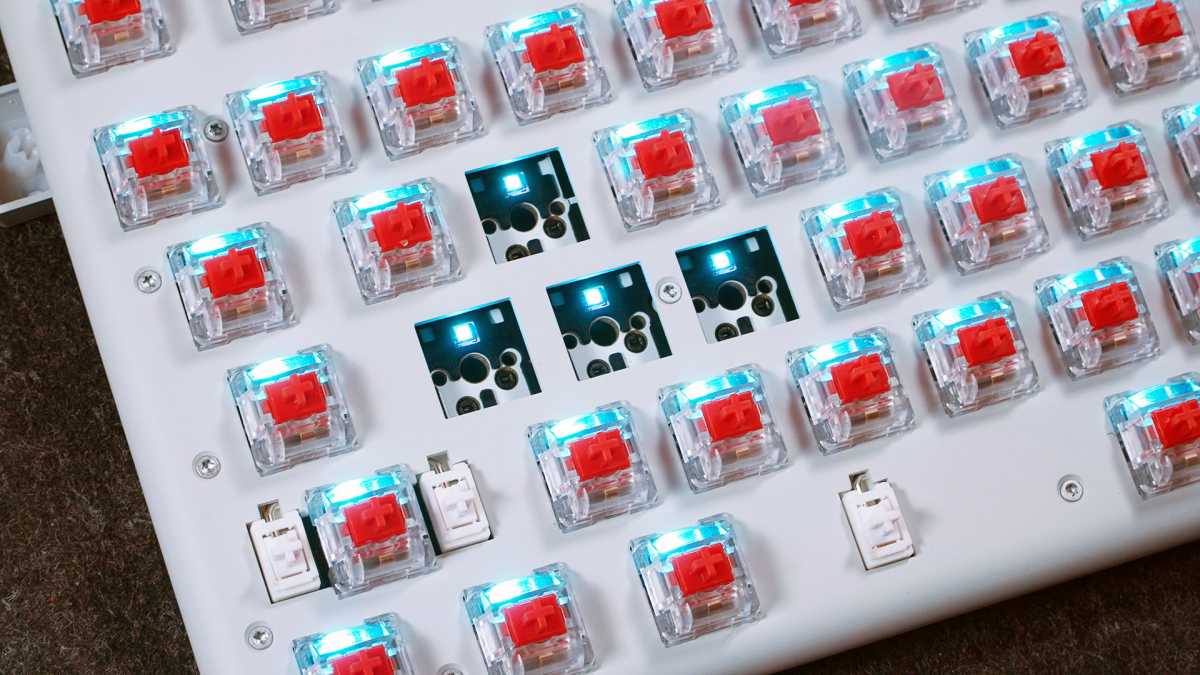
Michael Crider/Foundry
Michael Crider/Foundry
Michael Crider/Foundry
For example, we completely disassemble most Keychron Q-series keyboards, as they’re billed as “customizable” with multiple layers of sound dampening and include tools in the box to do so. But we didn’t disassemble the Dell Pro Wireless keyboard, because its aluminum body wasn’t meant to be opened by the end user.

Pictured: a plastic case, a layer of silicone, a PCB, a layer of foam, a steel plate, one knob, 18 screws, 18 switches, 18 keycaps, and one voided warranty.
Pictured: a plastic case, a layer of silicone, a PCB, a layer of foam, a steel plate, one knob, 18 screws, 18 switches, 18 keycaps, and one voided warranty.
Michael Crider/Foundry
Pictured: a plastic case, a layer of silicone, a PCB, a layer of foam, a steel plate, one knob, 18 screws, 18 switches, 18 keycaps, and one voided warranty.
Michael Crider/Foundry
Michael Crider/Foundry
Some keyboards are edge cases, advertising “custom” features, but actually void the warranty if the user does take it apart, such as the Razer BlackWidow V4 75% or the Corsair K65 Plus Wireless. For keyboards like these we take them apart anyway, and note at which point the warranty is voided.
Keyboard software
The last major consideration for a keyboard’s evaluation in and of itself is the software. For some keyboards, no software is necessary — it’s purely a plug-and-play affair. But gaming keyboards in particular need driver software to get access to more advanced features, like game-specific programming or macro functions.
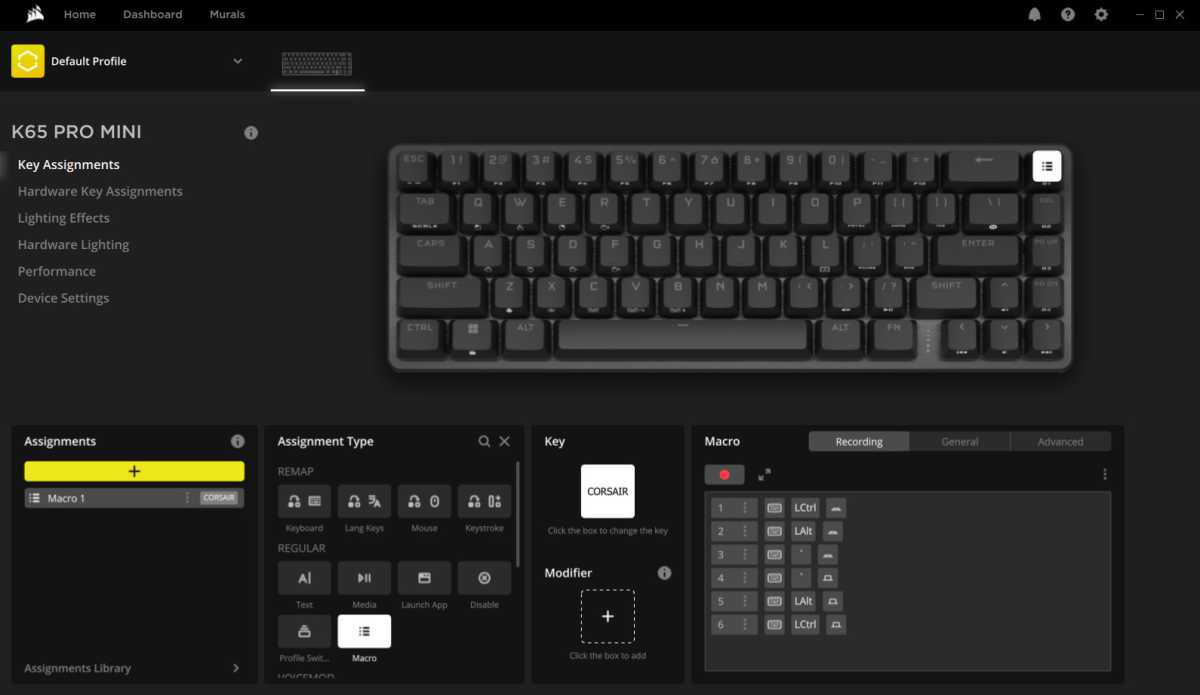
Michael Crider/Foundry
Michael Crider/Foundry
Michael Crider/Foundry
We evaluate how the software runs, how easy it is to use, and whether it’s full of junk (like an unfortunate tendency to include ads for other products, or even games — yuck.) A gaming keyboard that doesn’t include driver software at all is at a definite disadvantage. A growing number of keyboards are including the ability to program them with open source tools, such as QMK or VIA. This is a big plus for any keyboard, and gets noted as such.
We look at other, less vital features, like volume knobs and wheels or elaborate RGB lighting, last and least. These are nice positives, but won’t affect how you use a keyboard on a daily basis. Extras like these can make a great keyboard even better…but the shiniest LED lighting isn’t going to push a mediocre or poor design into one of our coveted roundup selection spots.
Keyboard value and final scoring
Finally, we look at the price. And this is indeed a crucial distinction. Money doesn’t grow on trees, after all, though some keyboard manufacturers (especially gaming brands) seem to think that it does. A keyboard that matches the competition in all factors or possibly even beats it in one or two, but which costs $50 tp $100 more, simply isn’t going to make the cut.
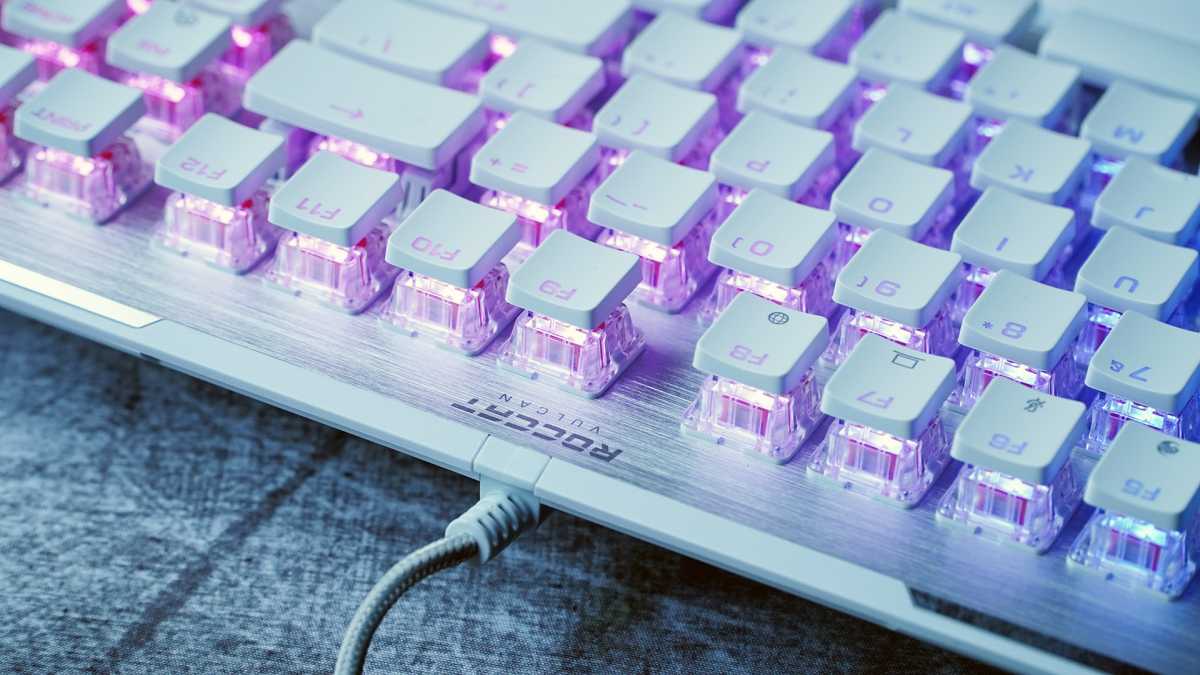
Michael Crider/Foundry
Michael Crider/Foundry
Michael Crider/Foundry
Unless money really is no object to you, price is a big factor in how everyone decides to buy things, so it’s a big part of how we evaluate keyboards, too.
With all those elements factored in, we make a final verdict and publish our review. For exceptional keyboards in any category, we compare them to our existing best picks, and see if they deserve to knock one of the keyboards off the relevant list. If so, we update our recommendations with the latest and greatest keyboards on the market.
Keyboards
But how do we determine which are the best? If you want to know the nuts and bolts of what goes into our exhaustive keyboard reviews, then read on.
How we get keyboards to review
Generally, we get keyboard review units directly from the manufacturers, which send them to the reviewer in their retail packaging. That allows us to experience the product in the same way that a potential buyer does. So from the moment we open the box, we’re evaluating the keyboard as if we were a regular consumer…albeit one with a decade or more of experience in professional evaluation.

Michael Crider/Foundry
Michael Crider/Foundry
Michael Crider/Foundry
Of course, we occasionally buy keyboards just for ourselves. After all, we’re geeks too. But if we choose to review the keyboard, we write with the same level of professional detachment. So you can be sure that we’re coming at each review (and the resultant roundups) from a place of neutrality.
What we test in keyboards
Once the retail packaging is cracked open, we examine the presentation of both the keyboard itself and any additional parts included therein. A wrist rest is a big plus for any keyboard (and a tangible additional value that gets considered in the review), but they’ll typically come with a cable of some sort, which gets bonus points for being detachable even if the keyboard is wireless. And naturally, wireless keyboards get a dongle, unless they’re relying solely on Bluetooth.

Michael Crider/Foundry
Michael Crider/Foundry
Michael Crider/Foundry
Mechanical keyboards tend to include a bit more in the package, especially if they’re leaning into a “custom” angle. These include a keycap tool (which is basically just two wire loops for pulling caps up vertically without damaging them), often combined with a switch puller if they have hot-swap switch sockets. Some mechanical boards will include alternate keycaps for different styles, or even spare switches in case some break.
When it comes to evaluating the keyboard itself, well, the thing to do is just use it. We typically use a keyboard for one to two weeks as our primary board with a desktop or laptop. And as professional writers, that means typing tens of thousands of words in a variety of formats. We’ll evaluate how it feels to type, if it has any particularly bad points, and how the keyboard layout compares to similar designs.

Michael Crider/Foundry
Michael Crider/Foundry
Michael Crider/Foundry
Smaller, more compact keyboards can be more difficult to adapt to, with more functions moved into a secondary layer and some keys (like the right Shift key) squashed to make room. Some of these choices can affect how comfortable it is to use them in both the short and the long term.
We’ll also play some PC games on all the keyboards that we test, with much more time devoted to it if the model is a specific “gaming” keyboard. How the keyboard performs for typing and/or gaming will be the primary factor in determining its review score, along with its price in comparison to similar designs.

Michael Crider/Foundry
Michael Crider/Foundry
Michael Crider/Foundry
For wireless keyboards, we’ll try out the wireless function in a variety of settings: directly connected to a desktop, to a laptop from several feet away, from across a room (about 10 to 15 feet) as a maximum scenario. This isn’t a particularly likely way of using it, but it might be relevant if you’re using the keyboard for a presentation PC or one hooked up to a living room television. We’ll try out all wireless modes, and swapping between devices if the keyboard advertises that as a feature.
Disassembling (some) keyboards
For mechanical keyboards that bill themselves as “customizable” or similar, we’ll test out removing the keycaps and switches, and see how far you can go in disassembling it. Whether or not we take it apart completely depends on how it’s advertised.

Michael Crider/Foundry
Michael Crider/Foundry
Michael Crider/Foundry
For example, we completely disassemble most Keychron Q-series keyboards, as they’re billed as “customizable” with multiple layers of sound dampening and include tools in the box to do so. But we didn’t disassemble the Dell Pro Wireless keyboard, because its aluminum body wasn’t meant to be opened by the end user.

Pictured: a plastic case, a layer of silicone, a PCB, a layer of foam, a steel plate, one knob, 18 screws, 18 switches, 18 keycaps, and one voided warranty.
Pictured: a plastic case, a layer of silicone, a PCB, a layer of foam, a steel plate, one knob, 18 screws, 18 switches, 18 keycaps, and one voided warranty.
Michael Crider/Foundry
Pictured: a plastic case, a layer of silicone, a PCB, a layer of foam, a steel plate, one knob, 18 screws, 18 switches, 18 keycaps, and one voided warranty.
Michael Crider/Foundry
Michael Crider/Foundry
Some keyboards are edge cases, advertising “custom” features, but actually void the warranty if the user does take it apart, such as the Razer BlackWidow V4 75% or the Corsair K65 Plus Wireless. For keyboards like these we take them apart anyway, and note at which point the warranty is voided.
Keyboard software
The last major consideration for a keyboard’s evaluation in and of itself is the software. For some keyboards, no software is necessary — it’s purely a plug-and-play affair. But gaming keyboards in particular need driver software to get access to more advanced features, like game-specific programming or macro functions.

Michael Crider/Foundry
Michael Crider/Foundry
Michael Crider/Foundry
We evaluate how the software runs, how easy it is to use, and whether it’s full of junk (like an unfortunate tendency to include ads for other products, or even games — yuck.) A gaming keyboard that doesn’t include driver software at all is at a definite disadvantage. A growing number of keyboards are including the ability to program them with open source tools, such as QMK or VIA. This is a big plus for any keyboard, and gets noted as such.
We look at other, less vital features, like volume knobs and wheels or elaborate RGB lighting, last and least. These are nice positives, but won’t affect how you use a keyboard on a daily basis. Extras like these can make a great keyboard even better…but the shiniest LED lighting isn’t going to push a mediocre or poor design into one of our coveted roundup selection spots.
Keyboard value and final scoring
Finally, we look at the price. And this is indeed a crucial distinction. Money doesn’t grow on trees, after all, though some keyboard manufacturers (especially gaming brands) seem to think that it does. A keyboard that matches the competition in all factors or possibly even beats it in one or two, but which costs $50 tp $100 more, simply isn’t going to make the cut.

Michael Crider/Foundry
Michael Crider/Foundry
Michael Crider/Foundry
Unless money really is no object to you, price is a big factor in how everyone decides to buy things, so it’s a big part of how we evaluate keyboards, too.
With all those elements factored in, we make a final verdict and publish our review. For exceptional keyboards in any category, we compare them to our existing best picks, and see if they deserve to knock one of the keyboards off the relevant list. If so, we update our recommendations with the latest and greatest keyboards on the market.
Keyboards
